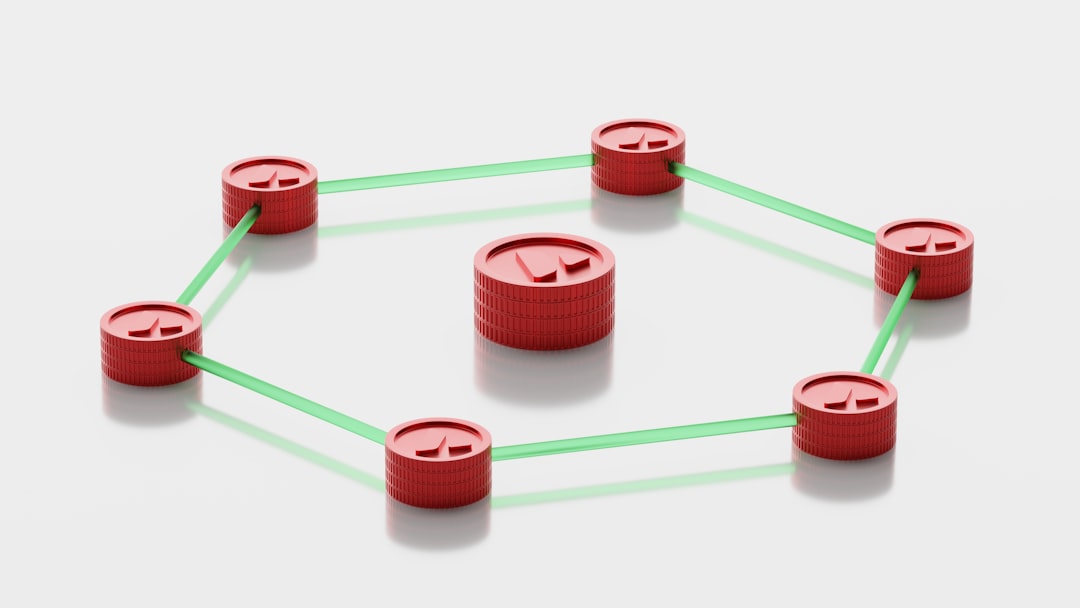Unlocking Global Productivity Through Remote Coworking Hubs

Introduction
The way people work has shifted dramatically over the past decade. No longer bound to a single office building, professionals now choose where they spend their day, what tools they use, and how they connect with teammates across continents. This flexibility has unlocked new levels of creativity, reduced commuting stress, and opened doors for talent in regions that were previously overlooked. At the heart of this transformation lies a concept that is gaining momentum worldwide: remote coworking hubs. These physical spaces, strategically placed in cities and towns across the globe, give digital nomads, freelancers, and distributed teams a reliable base for collaboration, networking, and focused work. By weaving together high‑speed connectivity, thoughtful design, and vibrant community, remote coworking hubs are becoming the connective tissue of a truly global workforce.
In this article we explore how these hubs are reshaping productivity on a planetary scale. We examine the drivers behind their rise, the specific advantages they bring to individuals and organizations, and the technology that makes seamless cross‑border collaboration possible. Real‑world examples illustrate the impact, while practical guidance shows companies and workers how to integrate remote coworking hubs into their daily routines. Finally, we look ahead to emerging trends that will further amplify the power of shared workspaces in a world that no longer adheres to traditional office boundaries.
The Rise of Remote Work
Remote work was once a niche perk offered by a handful of forward‑thinking firms. Over the last few years, however, it has become a mainstream expectation. Several forces have converged to accelerate this shift.
-
Advances in cloud computing have placed powerful applications in the browser, eliminating the need for on‑premises servers. Teams can edit documents, run analytics, and manage projects from any device with an internet connection.
-
Broadband expansion has lifted the barrier of slow or unreliable internet in many regions. Even secondary cities now enjoy fiber or 5G connections capable of handling video calls, large file transfers, and real‑time collaboration tools.
-
Changing employee preferences have driven talent to seek roles that provide autonomy over location and schedule. Surveys consistently show that flexibility ranks among the top factors influencing job satisfaction and retention.
-
Cost pressures have pushed organizations to rethink the necessity of large corporate headquarters. By adopting remote‑first policies, companies reduce overhead while tapping into a global talent pool.
These trends have created a fertile environment for remote coworking hubs to flourish. As workers embrace location independence, they also crave reliable places to anchor their days—spaces that combine the professionalism of an office with the social energy of a community.
What Are Remote Coworking Hubs?
A remote coworking hub is a physical workspace that offers flexible membership options, high‑quality amenities, and a culture designed to support distributed workforces. Unlike traditional office rentals, hubs allow users to drop in for a few hours, reserve a dedicated desk for a month, or secure a private office for a team. Key characteristics include:
- Open‑plan areas where individuals can focus on deep work or collaborate at standing tables.
- Meeting rooms equipped with video conferencing hardware, whiteboards, and sound‑proofing.
- High‑speed internet with redundancy to guarantee uptime even during peak usage.
- Ergonomic furniture that promotes health and comfort during long work sessions.
- Community events ranging from skill‑sharing workshops to networking mixers.
- Global network access that lets members use any hub in the brand’s portfolio with a single membership.
These hubs are often located in city centers, near public transport, or in emerging neighborhoods that offer a blend of affordability and vibrancy. By providing a consistent experience across locations, remote coworking brands enable workers to move freely between hubs while maintaining a familiar work environment.
Benefits for Global Productivity
Consistent Work Environment
When a team spreads across time zones, each member’s home office setup can vary dramatically. Some may lack proper lighting, a stable internet connection, or a quiet area. Remote coworking hubs level the playing field by delivering a reliable environment that meets professional standards. This consistency reduces friction when collaborating on shared documents, participating in live meetings, or delivering client presentations.
Faster Onboarding and Integration
New hires often face a steep learning curve when joining a distributed organization. By granting them immediate access to a hub, companies give newcomers a place to meet colleagues, attend orientation sessions, and absorb the company culture in a tangible way. The physical presence of a coworking space accelerates relationship building and helps remote employees feel part of a larger community.
Enhanced Focus and Reduced Distractions
Working from home can be plagued by interruptions—from household chores to family members. A hub offers a dedicated zone for focused work, complete with quiet zones, phone booths, and policies that respect concentration. This environment translates into higher output per hour and a clearer separation between work and personal life.
Expanded Talent Reach
Because hubs exist in diverse locations, companies can recruit talent without requiring relocation. A software engineer in Buenos Aires, a marketing specialist in Nairobi, and a product designer in Krakow can all work from hubs near their homes while staying connected to the core team. This geographic flexibility widens the talent pool and promotes inclusion.
Real‑Time Collaboration Across Borders
Modern collaboration tools—such as shared whiteboards, live coding platforms, and instant messaging—are powerful, but they thrive when paired with face‑to‑face interaction. Hubs provide meeting rooms equipped for high‑definition video calls, allowing a team in Tokyo to brainstorm with partners in Toronto as if they were in the same room. The immediacy of visual cues, body language, and shared physical artifacts boosts understanding and speeds decision‑making.
Cost Efficiency for Companies
Maintaining a full‑time office in every city where employees reside is financially impractical. By leveraging a hub network, organizations pay only for the space they actually use—whether that is a hot desk for a few days a month or a private office for a growing team. This pay‑as‑you‑go model aligns expenses with actual demand, freeing budget for strategic initiatives.
Community‑Driven Innovation
Coworking hubs attract a mix of professionals—entrepreneurs, freelancers, consultants, and corporate teams. This cross‑pollination of ideas sparks serendipitous collaborations, mentorship opportunities, and the sharing of best practices. Companies that encourage their employees to engage with the broader hub community often see fresh perspectives that drive product innovation and process improvement.
Key Features of Effective Hubs
Robust Connectivity
Internet reliability is the cornerstone of any remote workspace. Effective hubs deploy fiber connections with multiple ISP redundancies, enterprise‑grade routers, and network monitoring tools that detect and resolve issues before they impact users. Additionally, they offer secure guest Wi‑Fi, VPN support, and ample power outlets placed conveniently near desks.
Thoughtful Layout
The physical design influences how people work. Open areas with adjustable lighting support collaborative tasks, while enclosed pods or focus rooms cater to deep work. Acoustic treatment—such as sound‑absorbing panels and carpeted flooring—reduces ambient noise. Natural light, indoor plants, and ergonomic chairs contribute to well‑being and sustained productivity.
Scalable Meeting Infrastructure
Teams need spaces that can accommodate a range of meeting sizes. Hubs should provide small huddle rooms for quick syncs, medium rooms for team stand‑ups, and larger conference spaces for client presentations. All rooms must be equipped with high‑definition cameras, plug‑and‑play screen sharing, and integrated audio systems that capture every voice clearly.
Seamless Access Control
Members expect a frictionless entry experience. Keycard or mobile app access that works across all hub locations eliminates the need for physical keys and streamlines security. Integration with calendar systems allows users to book desks or rooms directly from their preferred scheduling tool.
Community Programming
Beyond the physical amenities, hubs thrive on vibrant community programming. Regular events—such as lightning talks, skill workshops, wellness classes, and cultural celebrations—foster relationships and keep members engaged. Companies can also host internal hackathons or training sessions within the hub, leveraging the community atmosphere to boost participation.
Support Services
On‑site staff who can assist with technical issues, printing, mail handling, and hospitality add a layer of convenience. Some hubs also offer concierge services like dry cleaning pickup, bike rentals, or local area guides, enhancing the overall member experience.
Technology and Connectivity
The digital backbone of remote coworking hubs goes beyond high‑speed internet. Several technology layers work together to create a seamless work environment.
Cloud‑Based Workspace Management
Membership platforms hosted in the cloud allow users to reserve desks, book rooms, manage billing, and access community directories from any device. These platforms integrate with popular calendar apps, enabling one‑click scheduling that automatically updates the hub’s room availability.
Unified Communication Suites
Modern teams rely on integrated communication tools that combine chat, voice, video, and file sharing. Hubs support these suites by providing dedicated bandwidth, optimized network routing, and hardware that ensures crystal‑clear audio and video quality. Some hubs also offer on‑site technical support for troubleshooting integration issues.
Security and Data Privacy
Remote workers handle sensitive information daily. Hubs implement enterprise‑grade firewalls, encrypted Wi‑Fi, and network segmentation to protect data traffic. For organizations with strict compliance requirements, hubs can provide private virtual LANs or dedicated lines that isolate a company’s traffic from the public network.
Productivity Enhancements
Digital signage displays in common areas can broadcast real‑time occupancy data, upcoming events, or company announcements. IoT sensors monitor environmental conditions—such as temperature, humidity, and CO₂ levels—to maintain a comfortable workspace. These data points can be accessed through dashboards that help facilities managers optimize the environment for health and performance.
Collaboration Hardware
High‑resolution monitors, wireless casting devices, and interactive whiteboards empower teams to collaborate as if they were in the same office. By standardizing this equipment across locations, hubs reduce the learning curve when members move between cities.
Community and Collaboration
A defining element of remote coworking hubs is the sense of belonging they foster. While technology connects us virtually, human interaction remains essential for motivation, creativity, and mental health.
Networking Opportunities
Regularly scheduled networking events—such as meet‑ups, industry panels, and informal coffee chats—bring together professionals from varied backgrounds. These interactions often lead to partnerships, freelance contracts, or mentorship relationships that would be unlikely in a purely virtual setting.
Knowledge Sharing
Members can host workshops on topics ranging from advanced coding techniques to personal finance management. By opening these sessions to the wider hub community, expertise spreads organically, elevating the collective skill level.
Peer Accountability
Working alongside others who are also focused on productivity creates a culture of accountability. Many hubs organize “focus sprints” where participants work silently for a set period and then share progress. This structure mirrors the benefits of a physical office without the distractions of an open‑plan environment.
Cultural Exchange
Because hubs attract an international crowd, they become melting pots of culture. Celebrating global holidays, hosting language exchange sessions, and sharing regional cuisine enrich the work experience and broaden perspectives. For multinational teams, this exposure enhances cultural competence and improves collaboration across borders.
Real‑World Examples
Hub A: The Urban Node in Southeast Asia
Located in the heart of a bustling metropolis, this hub offers 10,000 square feet of flexible workspace spread across three floors. Members benefit from a 10 Gbps fiber backbone, redundant power supplies, and a dedicated server room for companies that require on‑site hosting. The hub’s community team curates weekly events, including a “global lunch” where members bring dishes from their home countries. A multinational software firm uses this hub as a regional anchor, allowing its developers in the city to meet with product managers from Europe via a high‑definition video wall in the main conference room. Since adopting the hub model, the company reports a 15 percent increase in sprint velocity and a 20 percent reduction in travel expenses.
Hub B: The Coastal Retreat for Creatives
Set on a beachfront town, this hub blends work and wellness. It features outdoor terraces, yoga studios, and a design‑focused library stocked with industry publications. High‑speed internet is delivered through a combination of fiber and satellite backup to guarantee uptime even during storms. Freelance designers, content creators, and remote marketing teams gather here for “creative jams” that spark collaborative projects. A global advertising agency rotated a small creative team through the hub for a month, resulting in a campaign that won multiple industry awards and showcased the power of an inspiring environment on creative output.
Hub C: The Satellite Hub in Emerging Markets
In a city where reliable office space is scarce, this hub serves as a lifeline for local talent. It offers affordable day passes, a mentorship program linking members with senior professionals from the hub’s global network, and partnerships with local universities. By providing a professional setting, the hub has enabled several startups to secure seed funding and scale their operations. A remote consulting firm leveraged the hub to establish a regional presence, allowing consultants to meet clients in person without the overhead of a permanent office. The firm saw a 30 percent increase in client acquisition within six months.
These examples illustrate the diverse ways remote coworking hubs can be tailored to local contexts while delivering universal benefits—reliable connectivity, community, and flexibility—that drive productivity on a global scale.
Best Practices for Companies
Define Clear Policies
Establish guidelines that outline when and how employees may use coworking hubs. Policies should cover membership budgeting, booking procedures, data security responsibilities, and expense reporting. Clear expectations prevent confusion and ensure consistent usage across teams.
Align Hub Selection With Business Needs
Choose hubs that match the technical requirements of your workforce. If your team relies on heavy data transfer, prioritize locations with high‑capacity internet and dedicated bandwidth. For client‑facing roles, select hubs with professional meeting rooms and branding opportunities.
Integrate Hub Usage Into Workflow
Encourage teams to schedule regular in‑person collaboration sessions at hubs, especially for activities that benefit from face‑to‑face interaction, such as brainstorming, design reviews, or onboarding. Use calendar integrations to make booking seamless and visible to all stakeholders.
Leverage Community Events
Participate in hub‑hosted events to increase brand visibility and foster relationships with potential partners or talent. Sponsoring a workshop or hosting a lunch‑and‑learn can position your company as a thought leader within the hub ecosystem.
Monitor Productivity Metrics
Track key performance indicators—such as task completion rates, meeting effectiveness, and employee satisfaction—before and after hub adoption. Use the data to refine policies, adjust membership levels, and demonstrate ROI to leadership.
Ensure Security Compliance
Work with hub operators to confirm that network security measures meet your organization’s standards. For highly regulated industries, consider implementing a virtual private network (VPN) that routes traffic through your corporate data center, even when employees are on hub Wi‑Fi.
Provide Support Resources
Offer employees a quick‑start guide that includes hub locations, booking steps, Wi‑Fi credentials, and contact information for on‑site staff. A centralized repository of hub resources reduces friction and encourages adoption.
How Individuals Can Leverage Hubs
Identify Personal Goals
Determine what you hope to achieve by working in a hub—whether it is increased focus, networking opportunities, or access to better equipment. Align your membership plan with those objectives to maximize value.
Choose the Right Membership Model
Many hubs provide flexible options: daily passes for occasional use, dedicated desks for regular attendance, and private offices for teams. Evaluate your work pattern and select the model that offers the best balance of cost and convenience.
Build a Routine
Treat your hub visits like a structured part of your day. Arrive at a consistent time, set clear tasks for the session, and take advantage of focus zones to minimize distractions. A routine helps maintain momentum and reduces the temptation to drift into unproductive activities.
Engage With the Community
Attend events, introduce yourself to fellow members, and share your expertise. Even brief conversations can lead to valuable contacts, freelance opportunities, or collaborative projects. Community involvement also combats isolation, which is a common challenge for remote workers.
Optimize Your Workspace
Personalize your desk area within the hub’s guidelines—adjust chair height, arrange dual monitors, and keep essential supplies within reach. A comfortable setup enhances concentration and reduces physical strain.
Leverage Hub Resources
Take advantage of on‑site amenities such as printing services, coffee stations, and wellness areas. Use meeting rooms for client calls or team presentations to convey professionalism and avoid background noise.
Track Your Outcomes
Maintain a log of tasks completed, hours spent, and any new connections made during hub sessions. Reviewing this data helps you assess the impact on productivity and informs decisions about future membership renewal.
Future Trends Shaping Remote Coworking
Hybrid Physical‑Digital Spaces
As augmented reality (AR) and virtual reality (VR) technologies mature, hubs will integrate immersive collaboration zones where remote participants join a physical meeting as holographic avatars. This blend of physical presence and digital immersion will further dissolve geographic barriers.
Sustainable Design
Environmental concerns will drive hub developers to adopt green building standards—using renewable energy, low‑impact materials, and smart climate control systems. Members will increasingly select hubs that align with corporate sustainability goals.
Micro‑Hubs in Suburban Areas
To reduce commute times for workers living outside city centers, providers will establish smaller satellite hubs in residential neighborhoods. These micro‑hubs will offer essential amenities while preserving the community feel of larger locations.
AI‑Powered Space Management
Artificial intelligence will optimize desk allocation, lighting, and temperature based on real‑time occupancy data. Predictive analytics will suggest the best times for quiet work versus collaborative activities, enhancing overall efficiency.
Integrated Health Services
Future hubs may incorporate wellness clinics, physiotherapy stations, and mental‑health counseling on site. By addressing the holistic needs of remote workers, hubs will become one‑stop destinations for both professional and personal well‑being.
Conclusion
Remote coworking hubs are more than just desks and Wi‑Fi; they are strategic assets that unlock global productivity. By delivering reliable connectivity, thoughtfully designed spaces, and vibrant communities, hubs empower individuals to work at their highest level and enable companies to tap into talent wherever it resides. The benefits—ranging from cost savings and faster onboarding to enhanced collaboration and cultural exchange—are reshaping how organizations think about office real estate and how workers envision their professional lives.
Adopting this model requires clear policies, careful hub selection, and an openness to community engagement. For individuals, the key lies in aligning hub usage with personal goals, building routines, and actively participating in the ecosystem. As technology advances and sustainability becomes a priority, the next generation of hubs will blend physical and digital experiences, further erasing the boundaries that once confined work to a single location.
In a world where borders are increasingly porous and talent is globally distributed, remote coworking hubs stand as the connective tissue that brings people together, fuels innovation, and drives productivity across continents. Embracing them today positions businesses and professionals alike for success in the evolving landscape of work.
Random Posts

Smart Tax Moves for Digital Nomads and Global Residents
Learn how digital nomads can protect cash flow, avoid surprise liabilities, and legally minimize taxes with simple moves that match your travel pattern and income sources.
2 months ago

Ultimate Guide to Digital Nomad Hotspots and Essential Travel Gear
Discover the top digital nomad hotspots worldwide and the must-have gear to stay productive on the road. Get practical tips, checklists, and insider advice for thriving wherever you work.
2 months ago

Building a Secure Financial Plan on the Road
Learn to build a resilient financial system for digital nomads, covering income streams, budgeting, tax compliance, insurance, retirement and emergency funds, so you can travel worry-free.
1 month ago

Thriving Mental Health for Digital Nomads on the Road
Discover how digital nomads can protect their mental health on the road with simple routines, community connections, and productivity tips that turn travel stress into lasting wellbeing.
2 months ago

Travel Tips for Digital Nomads Seeking Affordable Housing
Learn how digital nomads can cut housing costs with proven strategies, smart tools, and destination insights, ensuring safe, connected, and community-rich stays without breaking the budget.
1 month ago
Latest Posts

Essential Software Every Remote Professional Should Use
Master remote work with essential tools: instant messaging like Slack, high definition video calls such as Zoom, and asynchronous voice apps. Streamline communication, stay connected and boost productivity.
1 day ago

Mastering Remote Work Productivity for Digital Nomads and Freelancers
Learn proven habits, tools, and tactics that help digital nomads and freelancers stay focused, deliver quality work, and maintain a sustainable lifestyle while traveling the world.
1 day ago

Tech‑Friendly European Towns Perfect for Remote Living
Discover Europe’s best small towns where fast internet, affordable living and vibrant tech communities let you work remotely while soaking up historic charm, lakeside views or mountain air.
1 day ago